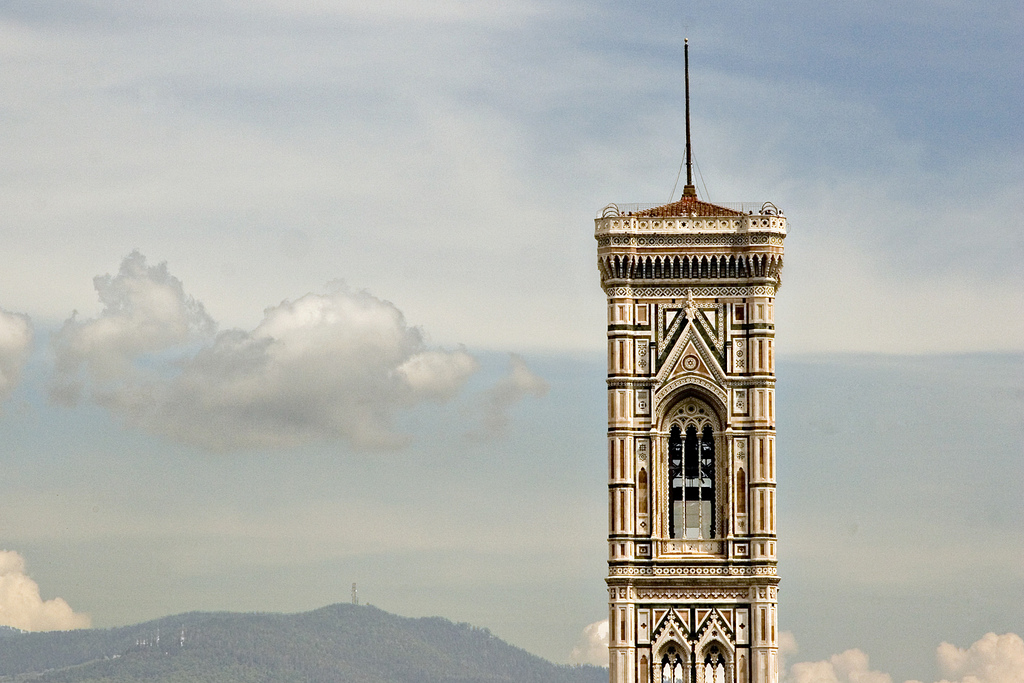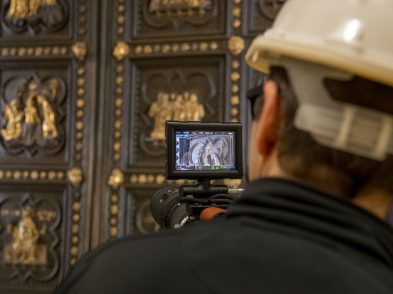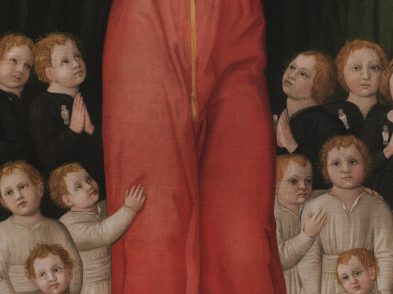Filmmaker David Battistella moved to Florence from Canada in 2011 to pursue his dream: writing and producing a feature film based on Ross King’s 2000 book Brunelleschi’s Dome, about the life of Filippo Brunelleschi and the building of Florence’s Cupola. This column, which began with TF 149, chronicles Battistella’s pursuit of his dream, including anecdotes of his new life in Florence and his efforts to finance and launch his ambitious project.
When the work of building Florence’s cathedral began, the construction of its famous bell tower, designed by the painter Giotto, was already well underway. Like Arnolfo di Cambio and Francesco Talenti, the first architects of the cathedral, Giotto did not live to see his tower completed. Looming over the Baptistery and clad, like the church, in white Carrara marble and green marble from quarries in nearby Prato, Giotto’s bell tower flanks the cathedral, providing a spectacular view onto Brunelleschi’s Cupola.
For those ancient builders, towers presented less of a construction challenge than did churches, with domed roofs: building straight up is a simpler engineering task than addressing curved shapes.
Climbing the tower today is a pleasant, open-air experience. The smooth stone steps of the long, steep staircases are dotted with small windows providing light and glimpses onto interesting views of the city. There are 414 steps to the top of the tower, which, like the Cupola, has no elevator. There is only one way to see the view: ascend one step at a time.
On the ascent, my guide gave me access to some old storage rooms in the tower. Over the centuries, the rooms had been used as deposits for marble statues that were not on display. But I could not help but think that they may have been used as meeting places, far away from the piazza below and the ears that might steal secrets.
About halfway up the tower are large, open spaces where one can rest a moment, take in some views or look at the original bell. From here, the view of Pippo’s (Filippo’s nickname) Cupola is stunning. You get a sense of how immense it is. From the tower, for the first time, I could really stand eye to eye with the master’s work to admire its beauty.
I often get emotional looking at the building. It happens quite a bit. Every view, every change of light changes its character, its nature, and allows me to see that it seems to have a living force. Thus, at times, it appears short and stout, at other times tall and proud. On blue-sky days, such as the day I ascended the tower, it was the latter, and after a short pause, I began to head towards the next flight of stairs, eager to get the view from the top.
Suddenly, when we were about three-quarters of the way up, my guide announced that we would be taking a detour. He pulled out a key to a half-height doorway that opened to a short, dark hallway. Where was he leading me? After crawling through the narrow space, I found myself directly under the bells of Giotto’s tower. Wow! The diameter across the main bell was easily almost twice my height. The bell’s hammer looked like a giant bronze tonsil-shaped beast, ready to strike and ring with a sound that could travel kilometers.
The thought of the bells going off frightened me, but my guide assured me that it would happen. So I laid down on my back, grabbing the widest lens I could find, trying to fit the bell into my lens’ field of view.
As the wind blew through the tower and I felt the old wooden boards under my back, I peered over at the Cupola and thought of the structure and how it carries weight. I wondered if Pippo might have used this exact view to imagine how his Cupola would turn out. I could hear only the click, click of the camera shutter and my heart racing as I lay under the cavernous bell. What a thrill!
Find David Battistella’s photos of the tower at http://bit.ly/AztrKa.









